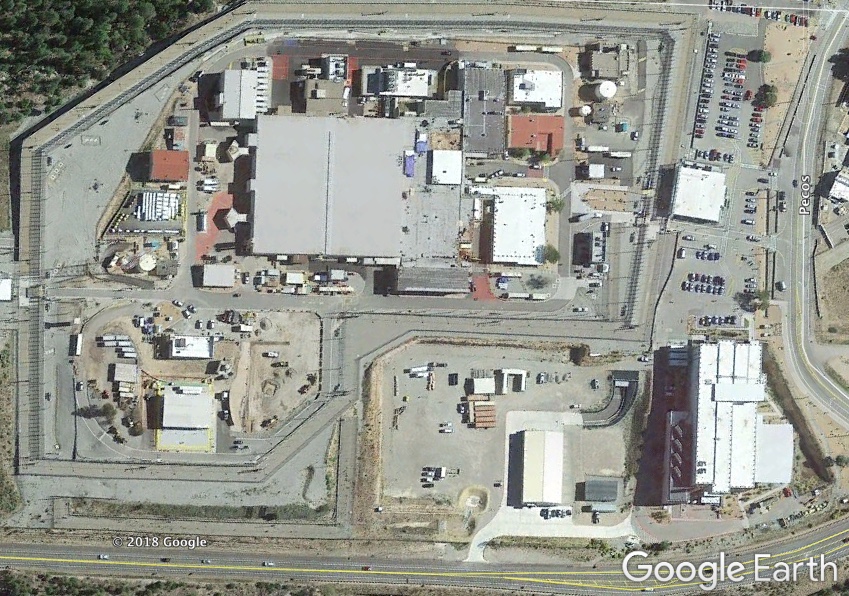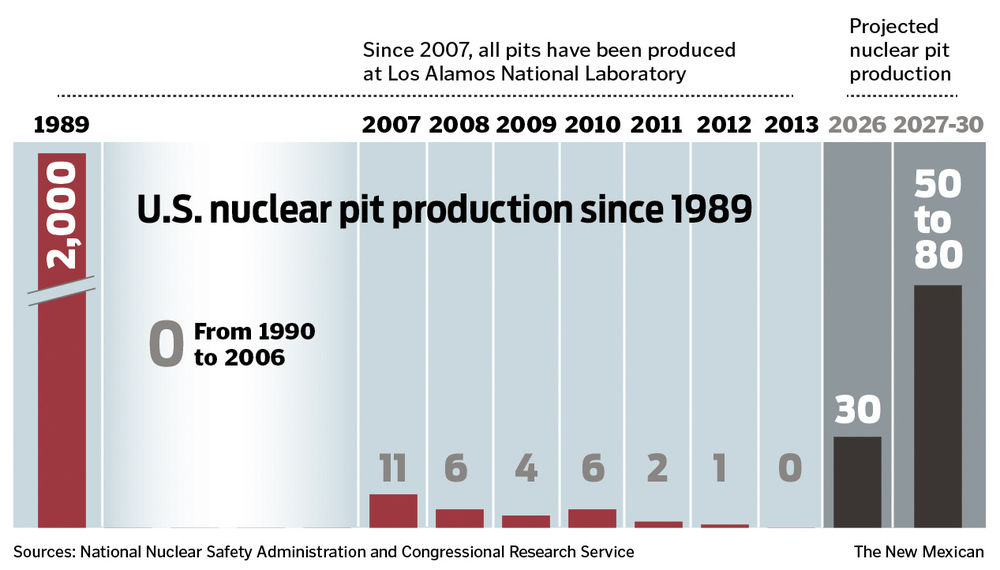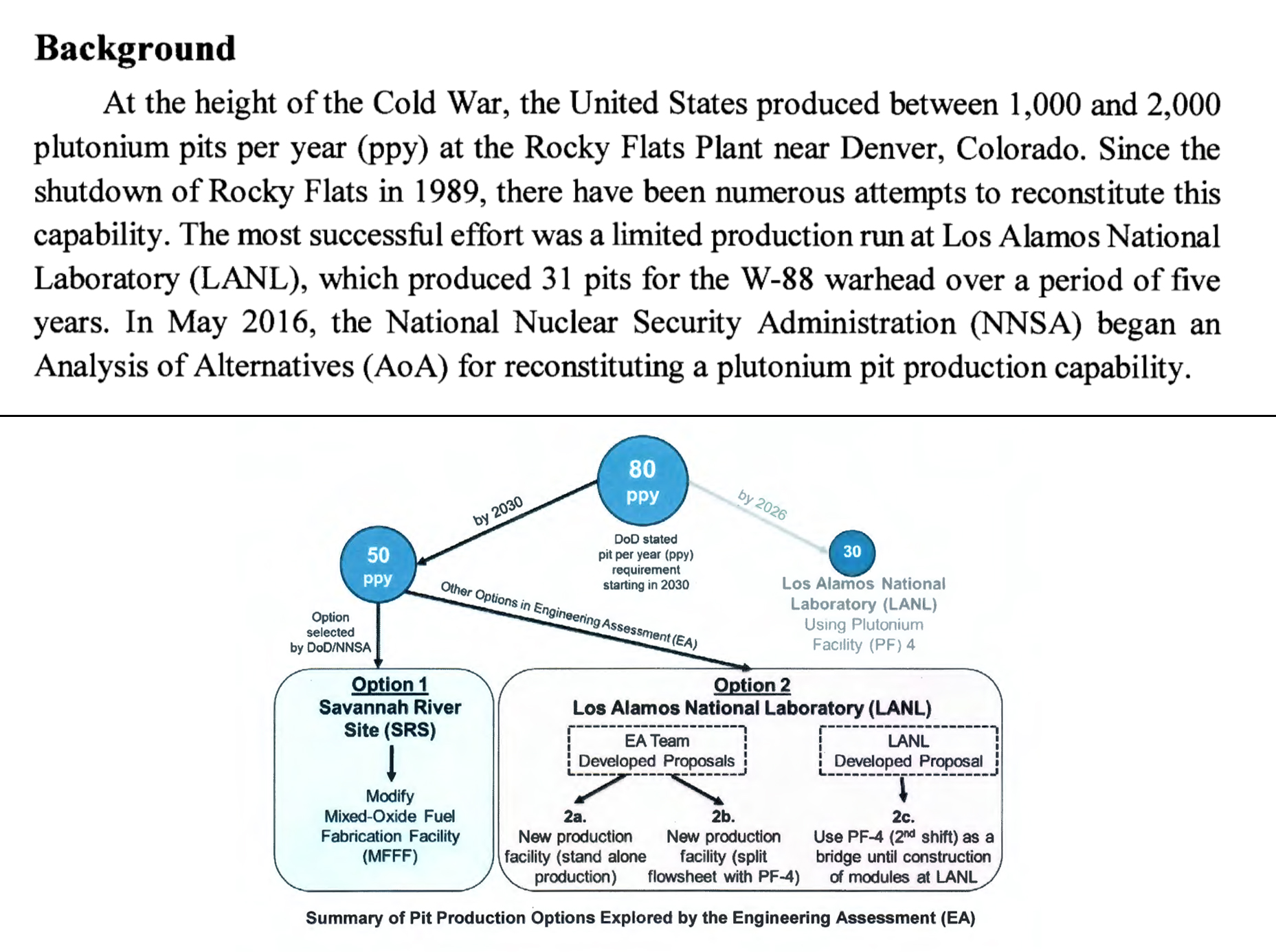Updates
Trump’s 2020 Nuclear Weapons Budget Escalates New Arms Race
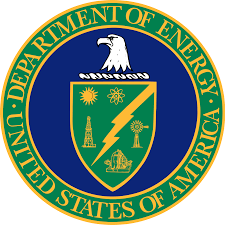
Posted By Scott Kovac
Santa Fe, NM – Today the Trump Administration released more budget details for the Department of Energy and its semi-autonomous National Nuclear Security Administration’s nuclear weapons programs for fiscal year 2020. This same fiscal year will also mark the 75th anniversaries of the atomic bombings of Hiroshima and Nagasaki.
Global Nuclear Weapons Threats Are Rising
More than 25 years after the end of the Cold War, all eight established nuclear weapons powers are “modernizing” their stockpiles. Talks have broken down with North Korea, the new nuclear weapons power. Nuclear-armed India and Pakistan narrowly averted war last month. Russian President Vladmir Putin made new nuclear threats in response to Trump’s announced withdrawal from the Intermediate-Range Nuclear Forces Treaty. This could lead to hair-trigger missile emplacements in the heart of Europe and block extension of the New Strategic Arms Reduction Treaty with Russia. If so, the world will be without any nuclear arms control at all for the first time since 1972.
Continue reading
Plutonium Pit Production NEPA Talking Points
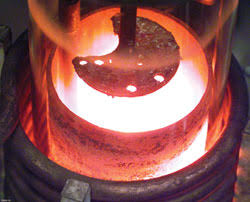
The National Environmental Policy Act (NEPA) is the landmark environmental law which requires executive agencies to give the public the opportunity to formally review and comment on major federal proposals. These talking points outline the history of the Department of Energy’s NEPA compliance on its various proposals concerning the production of plutonium pits (the fissile cores of nuclear weapons). The conclusion is that DOE’s semi-autonomous National Nuclear Security Administration (NNSA) is legally required to prepare a supplemental programmatic environmental impact statement (PEIS) on its current plan to expand plutonium pit production.
There are at least three reasons why NNSA must complete a supplemental programmatic environmental impact statement for expanded plutonium pit production:
1) Implementing regulations for the National Environmental Policy Act stipulate that “DOE shall prepare a supplemental EIS if there are substantial changes to the proposal or significant new circumstances or information relevant to environmental concerns…” 10. C.F.R. § 1021.314
2) As precedence, since 1996 there have been five programmatic environmental impact statements related to pit production and its expansion. It is legally unlikely that NNSA could implement its current plan to expand plutonium pit production without a new supplemental PEIS.
3) Now that NNSA is planning to produce more than 50 pits per year (or more than 80 pits under multiple shift operations), it is obliged by the 1998 court order to prepare a new PEIS.
Continue reading
Expanded Plutonium Pit Production for U.S. Nuclear Weapons
Plutonium pits are the radioactive cores or “triggers” of nuclear weapons. Their production has always been a chokepoint of resumed industrial-scale U.S. nuclear weapons production ever since a 1989 FBI raid investigating environmental crimes shut down the Rocky Flats Plant near Denver.Continue reading
Watchdog groups seek review of plutonium plan
Andy Stiny | The Santa Fe New Mexican
Three nuclear watchdog groups across the U.S., including Santa Fe-based Nuclear Watch New Mexico, are accusing the National Nuclear Security Administration of creating a plan to increase production of plutonium bomb cores in violation of an environmental law.
Colin Powell
“Today I can declare my hope, and declare it from the bottom of my heart, that we will eventually see the time when the number of nuclear weapons is down to zero and the world is a much better place.”
Jay Coghlan
Jay Coghlan, Executive Director of Nuclear Watch New Mexico, commenting on the Supplemental Environmental Impact Statement for the proposed Chemistry and Metallurgy Research Replacement (CMRR) Nuclear Facility in the plutonium production complex at Los Alamos National Laboratory.
Scott Kovac
Scott Kovac, Operations and Research Director, Nuclear Watch New Mexico debunking the argument that the economic impact of the proposed new nuclear facility at Los Alamos is an efficient use of $6 billion.
POGO: Congress Pushes Back on Nuke Agency’s Unnecessary Plutonium Buildup
“In a letter to the Senate Energy and Water Development Appropriations Subcommittee last month, the Project On Government Oversight was joined by Nuclear Watch New Mexico and Savannah River Site Watch in requesting justification for this expanded capacity. NNSA has over 14,000 plutonium cores already constructed and in storage, many of them specifically designated for potential reuse in new nuclear weapons as part of a ‘strategic reserve.’
If the interoperable warhead is not needed or wanted by the Defense Department, then new pit production is not needed, and the MOX facility can be terminated once and for all. If it is, Congress should ensure that any path forward will be appropriately sized and scoped to meet that mission need. Either way, if all of these interlocking parts are not matched up as part of an overall strategy then there’s only going to be more waste, fraud, and abuse and it is the average American taxpayer who will pay the price.”
-Lydia Dennett, POGO investigator See her full report at POGO)
New Contractors Selected For Expanded Nuclear Weapons Production at Los Alamos
Santa Fe, NM – Today the Department of Energy’s National Nuclear Security Administration (NNSA) announced its choice for the new management and operating contract for the Los Alamos National Laboratory (LANL).
The new contractor, Triad National Security, LLC, is a limited liability company consisting of the Battelle Memorial Institute, the University of California and Texas A&M University. All three are non-profits, and it is unclear how this will affect New Mexico gross receipts taxes.
Battelle claims to be the world’s largest non-profit technology research and development organization, and manages a number of labs including the Lawrence Livermore and Idaho National Laboratories. Texas A&M was founded in 1876 as the state’s first public institution of higher learning and has the largest nuclear engineering program in the country. DOE Secretary Rick Perry is an avid A&M alumnus.
The new contract includes a five-year base time with five one-year options, for a total of 10 years if all options are exercised. The estimated value of the contract is $2.5 billion annually.
The University of California (UC) ran the Lab from its beginning in 1943 until June 2006, when Los Alamos National Security, LLC (LANS), composed of the University of California (UC), Bechtel, AECOM and BWX Technologies, Inc., took over. That contract had a ten-year base period with ten one-year options, for a total of 20 years if all options were exercised. But LANS was terminated with nine years left of possible options. This was primarily due to LANS improperly preparing a barrel of radioactive wastes that ruptured, closing the Waste Isolation Pilot Plant for nearly three years. NNSA did not clarify why it is now issuing a shorter contract.
This change in contract follows a May 10, 2018 announcement by NNSA that production of plutonium pits, the fissile cores of nuclear weapons, will be expanded to at least 30 pits per year at LANL, and an additional 50 pits per year at the Savannah River Site. The Los Alamos Lab is the birthplace of nuclear weapons, and it is tying its future to increased nuclear weapons production, with the active support of the New Mexico congressional delegation. The Lab proposed, but failed to convince NNSA, to produce all 80 plutonium pits per year. LANL’s core research, testing and production programs for nuclear weapons now comprise 70% of its ~$2.5 billion annual budget, while much of the Lab’s remaining budget indirectly supports those programs.
Lisa E. Gordon-Hagerty, the new NNSA Administrator, testified during her confirmation hearing that expanded plutonium pit production is her number one priority. However, expanded production is NOT needed to maintain the safety and reliability of the existing nuclear weapons stockpile. In fact, no pit production for the existing nuclear weapons stockpile has been scheduled since 2011, and none is scheduled for the future. Up to 15,000 “excess” pits and another 5,000 in “strategic reserve” are already stored at DOE’s Pantex Plant near Amarillo, TX. In 2006 independent experts found that pits last a least a century (they currently average 40 years old). A 2012 follow-on study by the Livermore Lab found that the “graceful aging of plutonium also reduces the immediate need for a modern high-capacity manufacturing facility to replace pits in the stockpile.”
Future pit production is for speculative future new designs being pushed by the nuclear weapons labs, so-called Interoperable Warheads for both land- and sub-launched missiles that the Navy does not want. Moreover, future pits will NOT be exact replicas of existing pits. This could have serious potential consequences because heavily modified plutonium pits cannot be full-scale tested, or alternatively could prompt the U.S. to return to nuclear weapons testing, which would have severe international proliferation consequences.
Jay Coghlan, Nuclear Watch Director, commented, “Regardless of who runs the Lab, LANL will decrease mission diversification and increase nuclear weapons production, while holding cleanup flat at a tenth of its weapons budget. New Mexico been a nuclear weapons colony since WWII, and adding Battelle, Texas A&M, and the University of California is just more of the same. There will be little if any added benefit for New Mexico’s citizens.”
NukeWatch Recent Related Work
Nothing Found
It seems we can’t find what you’re looking for. Perhaps searching can help.
NukeWatch Past Related Work
| 2020
March 10, 2020 Press Release Energy Dept. Nearly Triples Funding for Plutonium Pit Production Cuts Cleanup in Half But Refuses to Complete New Env. Impact Statement for Los Alamos Lab Santa Fe, NM – Today the Department of Energy’s semi-autonomous nuclear weapons agency, the National Nuclear Security Administration (NNSA), announced that it will not complete a new site-wide environmental impact statement for the Los Alamos National Laboratory (LANL). The last site-wide environmental impact statement was in 2008. April 3, 2020 Press Release DOE Ignores COVID-19 Threat, Diverts Resources to Planning for Nuclear War by Releasing Draft Environmental Study on SRS Plutonium Bomb Plant Today, in the middle of the growing coronavirus pandemic, the U.S. Department of Energy ignored the real national crisis and irresponsibly shifted its focus to planning for nuclear war, revealing plans to construct a Plutonium Bomb Plant (PBP) at the Savannah River Site (SRS) in South Carolina. April 21, 2020 Press Release >120 Groups and Individuals Ask Udall and Heinrich to Extend Public Comment Period on Los Alamos Lab Plutonium Bomb Core Production Santa Fe, NM – Today, on behalf of more than 120 groups and individuals, Nuclear Watch New Mexico sent a letter to New Mexico Senators Tom Udall and Martin Heinrich. It asks them to act upon their own words and demand that the public comment period be extended for plutonium “pit” bomb core production that the National Nuclear Security Administration (NNSA) is fast tracking during the coronavirus epidemic. As sitting members of the Senate Appropriations and Armed Services Committees, Udall and Heinrich are in strong positions to make that demand of NNSA. May 6, 2020 Press Release DOE Repeatedly Asks Safety Board for Time Extensions, Los Alamos Lab Asked for >150 Cleanup Milestone Extensions, But During Pandemic NNSA Rejects NM Senators’ Request for Extension of Public Comment on Plutonium Bomb Core Production Santa Fe, NM – Lisa Gordon-Hagerty, head of the National Nuclear Security Administration (NNSA), has rejected a request by New Mexico Senators Tom Udall and Martin Heinrich to extend the public comment period on expanded plutonium “pit” bomb core production because of the COVID-19 pandemic. In contrast, even in normal times NNSA and its parent Department of Energy routinely ask other government agencies for major time extensions when it comes to cleanup and independent oversight. Read/Download the Full Press Release HERE June 24, 2020 Press Release WATCHDOG GROUPS FILE LEGAL PETITION WITH ENERGY DEPT: Allege Agency is Slow Walking “Record of Decision” Re: Plutonium Bomb Core Production to Prevent Judicial Review; Stage Set for Litigation on Expanded Production Today, legal counsel for the public interest groups Nuclear Watch New Mexico, Tri-Valley Communities Against a Radioactive Environment, Savannah River Site Watch and the Natural Resources Defense Council took a significant step toward a potential legal challenge to the U.S. Department of Energy’s plans for expanded production of plutonium cores, or “pits,” for new-design nuclear weapons. Read/Download the Full Press Release HERE September 1, 2020 Press Release NNSA Slams Door Shut on Public Accountability While Ramming Through Expanded Plutonium “Pit” Bomb Core Production Santa Fe, NM – The National Nuclear Security Administration (NNSA) announced today that it will not prepare a new site-wide environmental impact statement for the Los Alamos National Laboratory (LANL). With this decision NNSA is slamming the door shut on public accountability while it rams through expanded plutonium “pit” bomb core production at the Lab. NNSA is relying upon outdated studies from 2008 to justify pit production. Since that time the agency has wasted billions of taxpayers’ dollars, another catastrophic wildfire threatened the Lab, serious deep groundwater contamination was discovered and LANL has had chronic nuclear safety incidences with plutonium that it can’t seem to fix. November 5, 2020 Press Release DOE Issues Controversial Decision to Pursue a Plutonium Bomb Plant (PBP) at Savannah River Site (SRS); Inadequate Environmental Review and Lack of Justification for Production of 50 or More “Pits” per Year to Modernize Entire Nuclear Weapons Stockpile Open to Legal Challenge The U.S. Department of Energy (DOE) today issued a formal decision that it will pursue a massive Plutonium Bomb Plant (PBP) at the DOE’s Savannah River Site (SRS) in South Carolina, in order to produce plutonium “pits,” or cores, for nuclear warheads. The provocative decision, which adds fuel to concerns about a new nuclear arms race with Russia and China, drew immediate opposition from public interest groups near DOE sites in South Carolina, New Mexico and California. 2019 June 10, 2019 Press Release Federal Government Meets Watchdogs’ Demand for Environmental Review of Expanded Plutonium Pit Production In a victory for transparency and legal compliance by the government, the U.S. Department of Energy’s National Nuclear Security Administration (NNSA) today published a “Notice of Intent” in the Federal Register to complete environmental reviews on its controversial proposal to expand plutonium “pit” production for new and refurbished nuclear weapons. Read/Download the Full Press Release HERE June 4, 2019 Press Release Noted Environmental Lawyers Warn Government Not to Expand Production of Plutonium Bomb Cores in Violation of National Environmental Policy Act and Public Review On behalf of three public interest organizations - Nuclear Watch New Mexico, Tri-Valley Communities Against a Radioactive Environment and Savannah River Site Watch – attorneys for the law firm of Meyer Glitzenstein & Eubanks and the Natural Resources Defense Council recently sent a 16-page letter to Lisa Gordon-Hagerty, head of the National Nuclear Security Administration (NNSA). The detailed letter warns the nuclear agency to not proceed with aggressive plans to expand plutonium pit production without first meeting its legal requirements for timely public review and comment under the National Environmental Policy Act. Read/Download the Full Press Release HERE May 31, 2019 Press Release Faulty Radioactive Liquid Waste Valves Raise Crucial Plutonium Pit Production and Safety Board Issues Last Wednesday, facility operations personnel entered a service room and noticed a leak emanating from a valve on the radioactive liquid waste (RLW) system. Upon subsequent visual inspection by a radiological control technician, RLUOB engineers believe that this valve, and 6 similar valves, may be constructed of carbon steel. The RLW system handles radioactive liquid waste streams from chemistry operations that include nitric and hydrochloric acids—carbon steel valves would be incompatible with these solutions. The suspect valves are also in contact with stainless steel piping, which would create another corrosion mechanism. RLUOB management plans to drain the affected piping sections and develop a work package to replace all of the suspect valves. They will also confirm the valve materials and if shown to be incorrect, investigate the cause of this failure in the design, procurement, and installation processes. The valves were installed in 2013 as part of a modification to add straining and sampling capabilities that were not in the included in the original design. [Please note that DNFSB reports are posted a few weeks later than dated.] This immediately raises two crucial issues: 1) the National Nuclear Security Administration’s (NNSA’s) plans for expanded plutonium pit production; and 2) the current attempt by the Department of Energy to restrict Safety Board access to its nuclear weapons facilities. Read/Download the Full Press Release HERE |
| 2018
November 16, 2018 Fact Sheet Expanded Plutonium Pit Production for U.S. Nuclear Weapons Plutonium pits are the radioactive cores or “triggers” of nuclear weapons. Their production has always been a chokepoint of resumed industrial-scale U.S. nuclear weapons production ever since a 1989 FBI raid investigating environmental crimes shut down the Rocky Flats Plant near Denver. In 1997 the mission of plutonium pit production was officially transferred to its birthplace, the Los Alamos National Laboratory (LANL) in northern New Mexico, but officially capped at not more than 20 pits per year. However, in 2015 Congress required expanded pit production by 2030 whether or not the existing nuclear weapons stockpile actually needs it. This will support new military capabilities for nuclear weapons and their potential use. Read/Download the full fact sheet pdf HERE
Watchdog Groups Claim Nuclear Agency is Moving Forward to Manufacture New Plutonium Bomb Cores in Violation of National Environmental Law and Public Review Nuclear Watch New Mexico, Savannah River Site Watch, and Tri-Valley CAREs sent a letter of demand to the U.S. Department of Energy’s National Nuclear Security Administration (NNSA) to inform the government that its plan to quadruple the production rate of plutonium bomb cores is out of compliance with the National Environmental Policy Act (NEPA). NNSA’s premature plan to quadruple the production rate of plutonium bomb cores (“pits”), the heart of all US nuclear weapons, is out of compliance with requisite environmental law, the groups argue, as NNSA has failed to undertake a legally-mandated programmatic review and hold required public hearings. View/Download the entire press release HERE |




